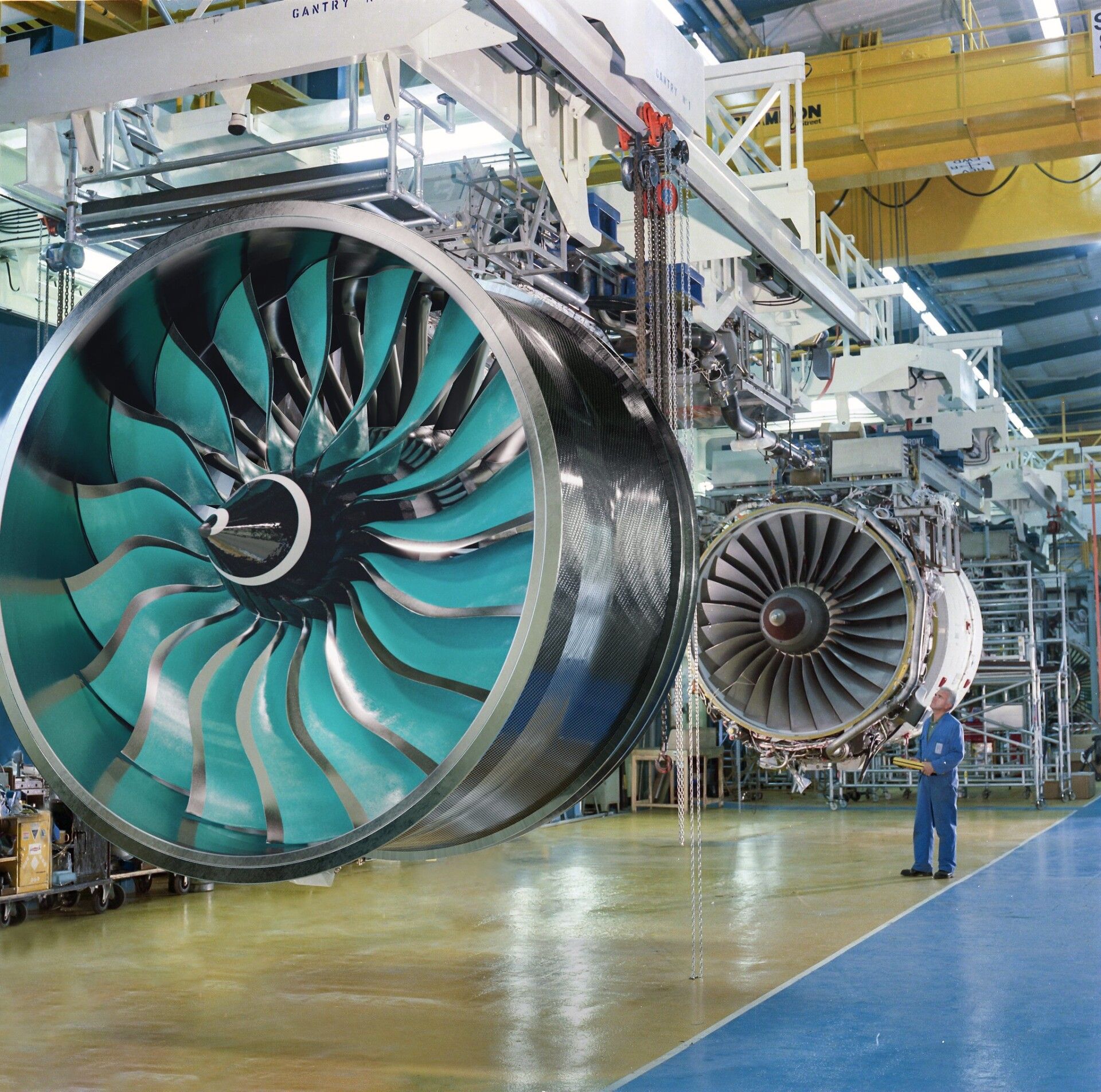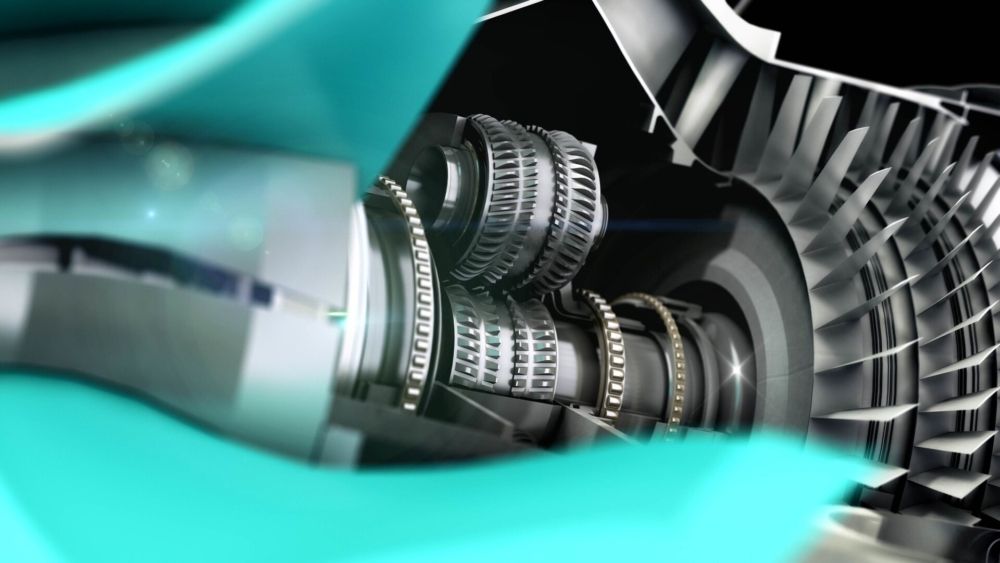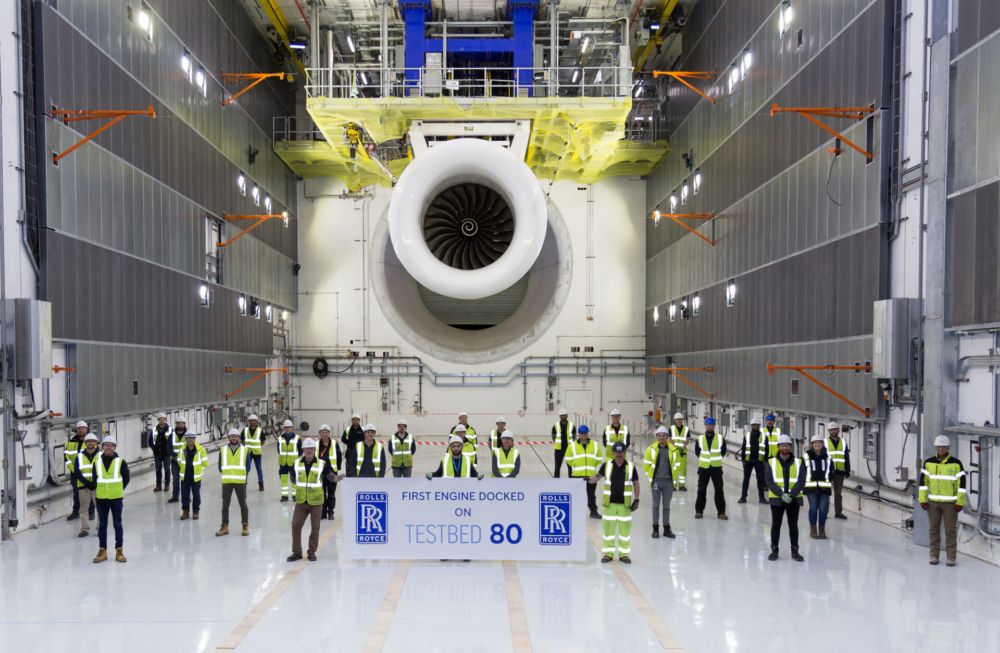The Rolls-Royce UltraFan is set to be the biggest engine aviation has ever seen. Having started work on the first demonstrator earlier this year, Rolls-Royce is fast approaching the first ground tests of this high technology, low emissions powerplant. Chief Engineer of the UltraFan development, Andrew Geer, outlined progress so far, noting that ground testing would begin early next year.
Progress on the UltraFan
Rolls-Royce announced earlier this year that it had begun building the world’s biggest aircraft engine – the UltraFan. Weeks later, it similarly announced the official opening of its huge engine testbed plant in Derby, UK. Speaking at this week’s Future Flying Forum, Andrew Geer, Chief Engineer of UltraFan product development, caught us up with how progress has been for this year so far. He said,
“In 2021, in Derby, we've got a real focus on production of the first Ultra fan demonstrator engine. The first vehicle is a whole new engine type that brings together a wide range of new technologies … it’s been a really important year for the whole team as the engine moves into its build phase.”
The UltraFan combines a number of challenging new technologies. For example, a power gearbox that produces 64 megawatts of transformed power, working with two carbon composite fan blade systems. It also has a super high energy intensity core system within the engine. These technologies are set to be proven with ground testing next year, as Geer noted,
“Early in 2022, the engine will move to test. The engine will prove the technologies alone and in combination are capable of producing an engine that burns 25% less fuel than our first-generation Trent engines - engines which are still in service today. It'll also show that we can produce far lower emissions from the same thrust class of engine that is in service today. All in all, a really important step forward on improvement of the gas turbine.”
The improvements being brought to market by the UltraFan is one theme being addressed by Rolls-Royce to tackle climate change. The engine will run on 100% sustainable aviation fuel (SAF) from the outset, and has been engineered to produce fewer emissions in all respects, not just CO2 but also NOx, particulates and noise as well.
Testing next year
The UltraFan is set to undergo ground testing in 2022, a key milestone in the development of this exciting product. To bring it to this stage, Rolls-Royce created a facility it calls Demo Works. This purpose-built facility brings together all the team, tools and equipment required to create something as complex as the UltraFan. It’s the first time Rolls-Royce has had all the component parts for a new engine assembled under one roof. Geer noted that things have been progressing well, saying,
“So far, so good. We're making good progress on the build of the engine, and really looking forward to having it ready for test next year.”
With an engine as huge as the UltraFan, a huge testing area is required. It is capable of moving an enormous amount of air at a time, and needs a significant intake area to deal with that air movement. As such, Rolls-Royce has built Testbed 80, which Geer says is the largest and smartest aerospace testbed in the world.
UltraFan will undergo its first test using 100% SAF, something Rolls-Royce considers crucial for tackling CO2 reduction. Indeed, the firm is committed to undertaking 100% SAF demonstrations on all its current engine types before the end of 2023. The Trent 1000, in service on the Boeing 787 Dreamliner, has already undergone 100% SAF fuel operations on Rolls-Royce’s flying testbed.
UltraFan is not just a gigantic engine in itself, however. The technologies demonstrated on this groundbreaking new engine may well end up as components of other, smaller Rolls-Royce engines, such as the Trent 1000. The work being done on the UltraFan project could pave the way to cleaner, lower emissions engine technology not just for new aircraft but for many of the aircraft already flying today.



